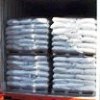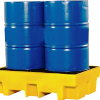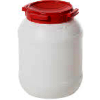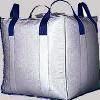Pure Aluminium chlorohydrate or Aluminum chlorohydrate Powder Solution USP Grade Manufacturers Suppliers, India
Anmol Chemicals are manufacturers of Specialty Chemicals and Pharmaceutical Excipients, in India. Anmol Chemicals Group has manufacturing facilities spread across India, representatives in Houston Chicago USA and toll manufacturers in China. We make IP, BP, USP, Ph Eur, FCC or Food Grade, ACS, AR or Analytical Reagent Grade, LR or Laboratory Reagent Grade and Pure Grades of various chemicals. All our items are analyzed to meet the required standards.
Our manufacturing facility is FDA GMP approved and ISO-9001, ISO 14000, OHSAS 18000, ISO 22000, FSSAI HACCP certified. We are offering products manufactured as per Kosher and Halal approved method. We are registered with "Reach" for export to European countries.
CAS No.: 12042-91-0 Dihydrate & 1327-41-9 Anhydrous, EC Code EINECS: 215-477-2 or 234-933-1, Chemical Formula: AlnCl(3n-m)(OH)m or Aly(OH)3y-zClz.H2O
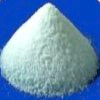
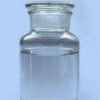
Aluminum Chlorohydrate USP Grade Specifications:
Aly(OH)3y-zClz.H2O
Aluminum chlorohydroxide.
Aluminum hydroxychloride.
Dihydrate [12042-91-0].
Anhydrous [1327-41-9].
Aluminum chlorohydroxide, dihydrate.
Aluminum hydroxychloride, dihydrate.
Dihydrate 210.48 [CAS 12042-91-0].
Anhydrous 174.45 [CAS 1327-41-9].
Aluminum Chlorohydrate consists of complex basic aluminum chloride that is polymeric and loosely hydrated and encompasses a range of aluminum-to-chloride atomic ratios between 1.91:1 and 2.10:1. It contains the equivalent of not less than 90.0 percent and not more than 110.0 percent of the labeled amount of anhydrous aluminum chlorohydrate.
Packaging and storage: Preserve in well-closed containers.
Labeling: The label states the content of anhydrous aluminum chlorohydrate.
Identification: A solution (1 in 10) responds to the tests for Aluminum and for Chloride.
pH: between 3.0 and 5.0, in a solution [15 in 100 (w/w)].
Arsenic: 2 microgm per gm.
Heavy metals: 0.002%.
Limit of iron: To pass the test --- (150 microgm per gm).
Content of aluminum: To pass the test.
Content of chloride: To pass the test.
Aluminum/chloride atomic ratio: Divide the percentage of aluminum found in the test for Content of aluminum by the percentage of chloride found in the test for Content of chloride, and multiply by 35.453/26.98, in which 35.453 and 26.98 are the atomic weights of chlorine and aluminum, respectively: the ratio is between 1.91:1 and 2.10:1.
Aluminum Chlorohydrate Solution USP Grade Specifications:
Aluminum Chlorohydrate Solution consists of complex basic aluminum chloride that is polymeric and encompasses a range of aluminum-to-chloride ratios between 1.91:1 and 2.10:1. The following solvents may be used: water, propylene glycol, dipropylene glycol, or alcohol. It contains the equivalent of not less than 90.0 percent and not more than 110.0 percent of the labeled concentration of anhydrous aluminum chlorohydrate.
Identification:
A: A solution containing the equivalent of about 100 mg of anhydrous aluminum chlorohydrate per mL responds to the tests for Aluminum and for Chloride.
B: Identification of propylene glycol (where stated on the label): Add about 10 mL of isopropyl alcohol to 2 g of Solution, mix, and filter. Evaporate the filtrate to about 1 mL on a steam bath: the IR spectrum of a film of this solution on a silver chloride disk exhibits maxima only at the same wavelengths as that of a similar preparation of a film of propylene glycol.
C: Identification of dipropylene glycol (where stated on the label): Add about 10 mL of isopropyl alcohol to 2 g of Solution, mix, and filter. Evaporate the filtrate to about 1 mL on a steam bath: the IR spectrum of a film of this solution on a silver chloride disk exhibits maxima only at the same wavelengths as that of a similar preparation of a film of dipropylene glycol.
D: Identification of alcohol (where stated on the label): In a small beaker mix 5 drops of Solution with 1 mL of potassium permanganate solution (1 in 100) and 5 drops of 2 N sulfuric acid. Immediately cover the beaker with filter paper moistened with a freshly prepared solution of 0.1 g of sodium nitroferricyanide and 0.25 g of piperazine in 5 mL of water: an intense blue color is produced on the filter paper, the color fading after a few minutes.
pH: between 3.0 and 5.0, in a solution prepared by diluting 3 g of the solution with water to obtain 10 mL.
Arsenic: The limit is 2 ppm.
Heavy metals: The limit is 0.001%.
Limit of iron: To pass the test --- (75 microgm per gm).
Content of aluminum: To pass the test.
Content of chloride: To pass the test.
Aluminum/chloride atomic ratio: Divide the percentage of aluminum found in the test for Content of aluminum by the percentage of chloride found in the test for Content of chloride, and multiply by 35.453/26.98, in which 35.453 and 26.98 are the atomic weights of chlorine and aluminum, respectively: the ratio is between 1.91:1 and 2.10:1.
Manufacturers
ANMOL CHEMICALS
S-8, SARIFA MANSION, 2ND PRINCIPAL SHAIKH HASAN MARG, MUMBAI 400009, INDIA
TEL: (OFF) 91-22-23726950, 23774610, 23723564. FAX: 91-22-23728264
e-mail: info@anmol.org
Copyright and Usual Disclaimer is Applicable
Exporters to USA, UAE, Europe, South Africa, Tanzania, Kenya, Egypt, Turkey, Nigeria, Uganda, Brazil, Chile, Argentina, Dubai etc.
Representatives in New York, Houston - Texas, Chicago - Illinois, Los Angeles.
Fast Selling IP BP USP ACS FCC Food Grades of Chemicals by Anmol Chemicals
Aluminium Magnesium Silicate or Magnesium Aluminum Silicate
Aluminum Chlorohydrate ----- Dihydroxyaluminum Sodium Carbonate
Aluminum Chloride ---------- Ammonium Sulfate ----- Ammonium Persulfate
Aluminum Potassium Sulfate - Ammonium Chloride ---- Ammonium Bicarbonate
Ammonium Carbonate --------- Benzyl Alcohol ------- Boric Acid
Benzoic Acid --------------- Borax; Sodium Borate - Calcium Chloride
Calcium Hydroxide ---------- Calcium Acetate ------ Calcium Butyrate
Calcium Lactobionate ------- Calcium Levulinate --- Calcium Saccharate
Carbamide Peroxide --------- Citric Acid ---------- Calcium Phosphate
Calcium Oxide -------------- Calcium Sulfate ------ Chromic Chloride
Cupric Chloride ------------
Ferric Chloride ------------ Ferric Nitrate ------- Fumaric Acid
Gentian Violet ------------- Glacial Acetic Acid
Lactobionic Acid ----------- Magnesium Butyrate
Magnesium Oxide ------------ Magnesium Chloride --- Magnesium Sulfate
Malic Acid ----------------- Maleic Acid ---------- Manganese Chloride
Manganese Sulfate ---------- Methylene Blue ------- Oleic Acid
Octyldodecanol -------------
Propylene Carbonate -------- Potassium Acetate ---- Potassium Carbonate
Potassium Hydroxide -------- Potassium Chloride --- Potassium Phosphate
Potassium Bitartrate ------- Propylene Carbonate -- Selenious acid
Sodium Molybdate ----------- Sodium Perborate ----- Sodium Phosphate
Sodium Propionate ---------- Sodium Acetate ------- Sodium Bicarbonate
Sodium Hydroxide ----------- Sodium Chloride ------ Sodium Thiosulfate
Sodium Selenite ------------ Urea ----------------- Zinc Chloride
Other Best Selling Products
Ammonium Bromide ----------- Ammonium Phosphate --- Barium Chloride
Butylated Hydroxyanisole --- Butylated Hydroxytoluene
Calcium Nitrate Nitrite ---- Calcium Propionate --- Copper Sulfate
Ceric Ammonium Nitrate ----- Cinnamaldehyde ------- Isatoic Anhydride
Directly Compressible Calcium Carbonate ----------- Encapsulated Citric Acid
Encapsulated Fumaric Acid -- Encapsulated Sodium Bicarbonate -
Encapsulated Sorbic Acid
Potassium Bromide ---------- Potassium Iodide ----- Potassium Nitrate Nitrite
Sodium Bromate ------------- Skatole -------------- Sodium Butyrate
Sodium Nitrite & Nitrate --- Sodium Bromide ------- Sodium Diacetate
Sodium Formaldehyde Bisulfite Strontium Chloride -- Stannous Chloride
TBHQ Tertiary Butylhydroquinone







